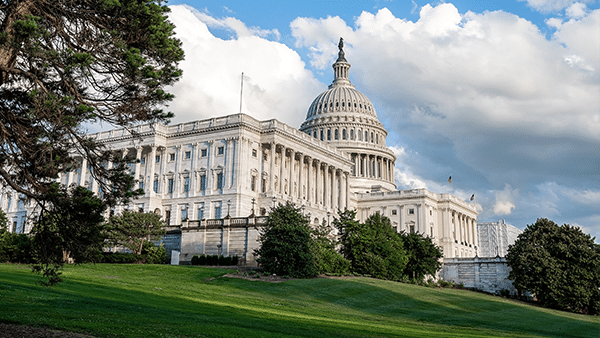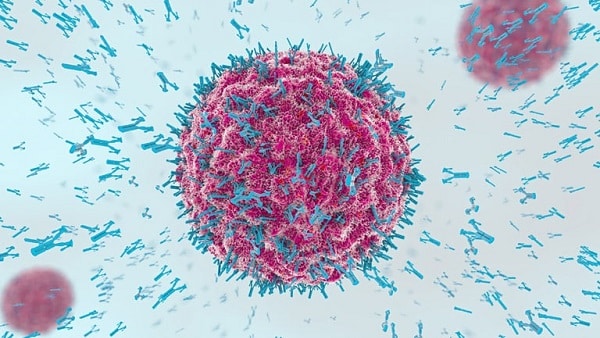A Comprehensive Guide to BARDA Funding
The Biomedical Advanced Research and Development Authority, commonly known as BARDA, has played a pivotal role in safeguarding public health in the United States and beyond. Since its inception, BARDA has bolstered the country’s preparedness and response capabilities against a broad array of threats, including pandemics as well as chemical, biological, radiological, and nuclear (CBRN) events. Let’s journey through its history and understand its significance.
The History of BARDA: Establishment and Early Days
Established in 2006 as a component of the Office of the Assistant Secretary for Preparedness and Response (ASPR) within the U.S. Department of Health and Human Services (HHS), BARDA’s foundation was rooted in the need for a more coordinated and advanced approach to the development and stockpiling of medical countermeasures (MCMs). These MCMs include vaccines, drugs, therapies, and diagnostic tools to counteract potential CBRN threats and emerging infectious diseases.
In the early 2000s, several bioterrorism events and pandemic scares, such as the anthrax attack in 2001 and the H5N1 bird flu outbreak in 2008, added further impetus to the creation of a specialized agency to counter emerging biothreats.
BARDA Mission and Vision
BARDA’s mission has been to aid in the transition of medical countermeasures, including vaccines, drugs, and diagnostics, from research through advanced development towards FDA approval. By bridging the notorious “valley of death” in which many promising biomedical innovations fail due to a lack of funding or resources, BARDA has facilitated the movement of many products into the market.
In essence, the agency acts as a bridge between early-stage research and market realization, ensuring that potentially lifesaving treatments and vaccines receive the support they need to make it through rigorous development and testing processes.
Key Contributions
One of BARDA’s most significant contributions has been its establishment of Public-Private Partnerships. Through these partnerships, BARDA collaborates with industry partners, bringing together the best of government and private sector expertise, funding, and resources to accelerate the development and availability of crucial medical countermeasures.
The agency’s flexible approach has also allowed it to pivot quickly in response to emerging threats. For instance, during the 2014-2016 Ebola outbreak in West Africa, BARDA was instrumental in advancing the development of the ERVEBO vaccine, which is licensed for the prevention of disease caused by Zaire ebolavirus in individuals 18 years of age and older, as well as the ZMapp antibody cocktail. Its rapid response, combined with international collaborations, played a role in curbing the epidemic.
Furthermore, the 2009 H1N1 pandemic underscored BARDA’s relevance. The agency was central to the U.S. government’s response, aiding in the rapid development, manufacturing, and distribution of H1N1 vaccines.
COVID-19 and BARDA’s Role
The COVID-19 pandemic, which emerged in late 2019 and quickly spread globally, underscored the urgency of BARDA’s mission. Given the scale and rapid spread of the virus, quick development, testing, and deployment of vaccines and therapeutics were essential.
BARDA’s existing infrastructure and experience allowed it to act swiftly. The agency played a pivotal role in the U.S. government’s Operation Warp Speed initiative, which aimed to deliver 300 million doses of a safe, effective vaccine for COVID-19 by January 2021. With its industry partnerships and funding capabilities, BARDA contributed to the advanced development and manufacturing of multiple vaccine candidates.
Future Directions and Challenges
While BARDA’s achievements are laudable, challenges persist. The continuously evolving landscape of biothreats and emerging infectious diseases means that agility, foresight, and sustained investment are crucial. The unpredictability of pandemics, as evidenced by COVID-19, indicates that global collaboration and a holistic approach, encompassing not just treatment but also prevention and preparedness, are essential.
Moreover, the intersection of technology, especially biotechnology, with potential threats – either natural or man-made – means that BARDA’s role will only grow in importance in safeguarding public health.
BARDA’s history, rooted in the complexities of the 21st century’s health challenges, showcases the significance of preparedness and innovation. Through its partnerships, funding mechanisms, and unwavering focus on bridging the gap between research and market realization, BARDA remains a bulwark against global health threats. As we move forward, it’s clear that this agency will continue to be at the forefront of ensuring that society remains resilient in the face of future health challenges.
How is BARDA Funded?

To fulfill its mandate, BARDA requires significant and consistent funding. Here, we explore the intricacies of how BARDA is funded, including the various mechanisms that ensure it remains at the forefront of health security.
Direct Congressional Appropriations
The primary mechanism for BARDA’s funding is the annual Congressional appropriations process. Like other federal agencies, BARDA submits its budget request, detailing its financial needs for the upcoming fiscal year. This request takes into consideration ongoing projects, anticipated future needs, and any adjustments based on lessons learned from previous emergencies or health threats.
Congress reviews BARDA’s request as part of the broader budget considerations for the Department of Health and Human Services (HHS), under which BARDA operates. Once deliberations are concluded, Congress allocates funds to BARDA, determining its operating budget for the year.
The Project BioShield Special Reserve Fund (SRF)
Established in 2004, the Project BioShield Act was a pivotal piece of legislation designed to spur the development and procurement of medical countermeasures against chemical, biological, radiological, and nuclear (CBRN) threats. Recognizing that the private sector often faced significant risks in developing such countermeasures, the Act aimed to guarantee a market for effective solutions.
Central to this effort was the creation of the Special Reserve Fund (SRF). The SRF was set up with a commitment of $5.6 billion over a decade, from fiscal years 2004 to 2013. This fund is specifically earmarked for the procurement of crucial countermeasures, ensuring that even if a product is still in the advanced stages of development and has yet to receive full regulatory approval, there are guaranteed funds available for its purchase once it meets the necessary criteria.
Emergency Supplemental Funding
While annual appropriations and the SRF provide consistent funding sources, there are times when unforeseen health emergencies necessitate additional resources. In such cases, Congress can approve supplemental funding to bolster BARDA’s capabilities.
A prime example of emergency supplemental funding coming into play was during the COVID-19 pandemic. Given the unprecedented scale and urgency of the crisis, Congress approved vast amounts of supplemental funding to accelerate the research, development, manufacturing, and distribution of vaccines, therapeutics, and diagnostics. A significant portion of this funding was channeled through BARDA, reflecting its central role in the nation’s pandemic response.
Transfers and Collaborations
Beyond its direct funding sources, BARDA can receive transfers from other governmental agencies. These transfers are typically made based on specific needs or to leverage BARDA’s expertise in a particular area.
Moreover, BARDA engages in various collaborations and partnerships, both with other government entities and the private sector. Some of these collaborative efforts come with shared funding arrangements, allowing BARDA to leverage additional resources beyond its direct appropriations.
The Challenge of Funding Predictability
One of the challenges BARDA faces is the unpredictability of health threats. While the agency can make educated forecasts and assessments, the nature and timing of the next health crisis remain uncertain. This unpredictability poses challenges for long-term planning and resource allocation.
However, the combination of annual appropriations, the Special Reserve Fund, and the potential for emergency supplemental funds provides a degree of financial flexibility. This multi-faceted funding approach ensures that BARDA can pivot rapidly and scale up its efforts in response to emerging threats.
Accountability and Oversight
With significant resources at its disposal, BARDA operates under stringent oversight mechanisms to ensure taxpayer dollars are utilized effectively. The agency is mandated to provide regular updates and reports to Congress, detailing its expenditures, project progress, and any adjustments to its strategy.
Furthermore, like other federal entities, BARDA is subject to audits, ensuring transparency and accountability in its financial operations.
Future Considerations for BARDA’s Funding
As the nature of health threats evolves, there’s an ongoing discussion about how best to fund agencies like BARDA. The COVID-19 pandemic underscored the importance of rapid, scalable responses to health emergencies. With this in mind, there are calls for even more robust and flexible funding mechanisms for BARDA, ensuring it remains agile and responsive in the face of future threats.
The funding of BARDA is a testament to the importance the U.S. government places on health security. Through a combination of annual appropriations, dedicated funds like the SRF, and the capacity for emergency allocations, BARDA is equipped to lead the nation’s response to a myriad of health challenges.
Yet, as with all things, the landscape of health security is constantly evolving. As such, the mechanisms for funding BARDA, while robust, will need to be continually assessed and refined, ensuring that the agency remains at the forefront of the nation’s defense against current and future health threats.
What does BARDA fund?

BARDA funds a broad array of projects and initiatives aimed at enhancing the United States’ preparedness and response capabilities to biological threats, be they natural or man-made. Specifically, BARDA focuses on the development and stockpiling of medical countermeasures (MCMs) which are essential in combating a diverse set of threats. Here’s a breakdown of what BARDA funds:
Vaccines
One of the most crucial and effective medical countermeasures against infectious diseases and biological threats is the development and deployment of vaccines. BARDA invests heavily in the advanced research, development, and production of vaccines for threats like pandemic influenza, bioterrorism agents, and emerging infectious diseases. This funding often facilitates the stages of research where many private entities are hesitant to invest due to high risks and uncertain market returns.
Therapeutics
Beyond prevention, BARDA also funds the development of treatments for various health threats. This can encompass a wide spectrum:
- Antiviral Drugs: For conditions like pandemic influenza or other viral outbreaks.
- Antibacterial Treatments: Especially targeting drug-resistant bacterial strains, which are an increasing concern.
- Antidotes: For chemical or radiological agents, ensuring the nation’s preparedness against potential terrorist attacks using such agents.
Diagnostics
Quick, accurate diagnosis is the cornerstone of an effective response to health emergencies. Without proper diagnostic tools, it becomes challenging to manage outbreaks, allocate resources, and apply appropriate treatments. BARDA, therefore, funds the development of rapid diagnostic tools, especially point-of-care solutions that can be easily deployed in various settings, from hospitals to field clinics.
Respiratory Protective Devices
In some emergencies, especially those arising from certain chemical or biological agents, protecting the respiratory system becomes paramount. BARDA funds the research, development, and stockpiling of respiratory protective devices, ensuring first responders, medical professionals, and the general public have access to essential protective equipment when needed.
Advanced Research & Innovations
While specific medical countermeasures are critical, BARDA’s funding isn’t limited to these alone. Recognizing the rapid pace of scientific and technological advancement, BARDA also invests in novel, cutting-edge technologies and methodologies that can revolutionize health security:
- Novel Manufacturing Techniques: Traditional methods of producing vaccines or drugs might not be sufficient in the face of a large-scale emergency. BARDA funds alternative manufacturing techniques, such as cell-based or recombinant DNA technologies, to ensure rapid, scalable production.
- Drug Delivery Systems: Innovations that facilitate easier or more effective delivery of treatments.
- Platform Technologies: These are foundational technologies that can be adapted to various threats, allowing for quicker development of countermeasures when a new threat emerges.
Public-Private Partnerships
Developing medical countermeasures is a resource-intensive endeavor. BARDA often collaborates with private entities, including pharmaceutical and biotech companies, to leverage shared expertise, resources, and funding. These partnerships ensure that promising treatments, diagnostics, or vaccines make it through the so-called “valley of death” in drug development, where many potential solutions falter due to a lack of resources.
Infrastructure and Manufacturing
Readiness is not just about having the right solutions but also about having the capacity to produce them at scale when required. BARDA funds the establishment and maintenance of advanced development and manufacturing facilities. The goal is to ensure that, when a crisis strikes, the U.S. can quickly ramp up the production of essential countermeasures.
Training & Exercises
A solution is only as effective as the people deploying it. To ensure that medical professionals, first responders, and other stakeholders are prepared to act swiftly and efficiently during emergencies, BARDA funds training programs and simulation exercises. These initiatives test and refine response strategies, ensuring that all stakeholders know their roles and responsibilities during real-world emergencies.
Regulatory Science
The development of medical countermeasures doesn’t operate in a vacuum. For any solution to be deployed, it must meet stringent regulatory standards to ensure safety and efficacy. BARDA, therefore, funds initiatives and research in regulatory science. This helps streamline the regulatory process, ensuring that potential solutions can be reviewed, approved, and deployed faster without compromising safety.
Global Health Security Initiatives
In today’s interconnected world, a health threat in one part of the globe can quickly become a worldwide concern. BARDA’s mission, while primarily focused on U.S. health security, also encompasses global health initiatives. In collaboration with international partners, BARDA funds projects that strengthen health security globally, recognizing that a threat anywhere can be a threat everywhere.
BARDA’s funding initiatives reflect a comprehensive, holistic approach to health security. From the microscopic level of pathogens to the macroscopic scale of global health infrastructure, BARDA’s investments aim to ensure that the U.S. and its global partners are always prepared to respond to, manage, and recover from a myriad of health threats. Through strategic investments, collaborations, and a focus on innovation, BARDA continues to be a bulwark in the defense against some of the world’s most pressing health challenges.
In summary, BARDA funds a comprehensive array of initiatives aimed at ensuring that the U.S. is well-prepared to detect, respond to, and recover from a range of biological threats. Through its funding, BARDA seeks to bridge the gap between early-stage research and the final delivery of essential medical countermeasures.
How Does BARDA Do Procurement?

BARDA’s procurement process involves a combination of traditional federal acquisition approaches and unique strategies tailored to its mission of developing and stockpiling medical countermeasures. The goal is to rapidly procure necessary products and services while ensuring fair competition and best value for the U.S. government. Here’s a look at how BARDA’s procurement process operates:
The Need for Specialized Procurement
Given the unique nature of its mission, BARDA’s procurement needs are distinct from many other government agencies. The threats it addresses—whether naturally occurring or man-made—are unpredictable in terms of timing, scale, and specific nature. This unpredictability means that BARDA must be agile in its procurement processes, ensuring that it can rapidly secure the necessary countermeasures when a threat emerges.
Project BioShield
One of the primary mechanisms through which BARDA procures medical countermeasures is Project BioShield. Established in 2004, Project BioShield provides a guaranteed market for MCMs, ensuring that companies have a financial incentive to invest in the research and development of products that might otherwise have limited commercial appeal.
Under Project BioShield, BARDA can commit to purchasing a product even before it has received full regulatory approval. This “guaranteed market” approach provides companies with the assurance that there will be a buyer for their product if they successfully develop it, thus incentivizing them to invest in areas that are critical for national security but might not be commercially viable under normal circumstances.
Broad Agency Announcements (BAAs)
BARDA often uses Broad Agency Announcements (BAAs) to solicit proposals for specific areas of interest. BAAs are open calls for proposals that outline a particular need or challenge, allowing companies and researchers to submit their solutions. This open approach enables BARDA to tap into a wide range of potential solutions and innovations.
The DRIVe Initiative
Recognizing the need for innovative solutions, BARDA launched the Division of Research, Innovation, and Ventures (DRIVe) in 2018. DRIVe focuses on transforming health security by investing in disruptive technologies and approaches. Through DRIVe, BARDA can partner with companies in the early stages of product development, providing funding and support to bring promising technologies to fruition.
Contracting Mechanisms
BARDA employs various contracting mechanisms to facilitate its procurement processes. These include:
- Cost-Reimbursement Contracts: These contracts reimburse the contractor for allowable costs up to a pre-determined limit. They are often used when uncertainties in contract performance do not allow for a fixed-price arrangement.
- Fixed-Price Contracts: Under this arrangement, a set price is agreed upon for the delivery of specific goods or services. This type of contract places more risk on the contractor, as they are responsible for any cost overruns.
- Other Transactional Authorities (OTAs): OTAs provide BARDA with more flexibility than traditional federal acquisition regulations. They allow for faster and more agile procurement processes, which can be particularly valuable in the face of rapidly evolving threats.
Collaborative Approach
One of the hallmarks of BARDA’s procurement strategy is its collaborative approach. Recognizing that the development of medical countermeasures is a complex and multifaceted challenge, BARDA often partners with other government agencies, private companies, academic institutions, and non-profit organizations. These partnerships leverage the strengths and expertise of each entity, ensuring a more robust and comprehensive response to public health threats.
Emphasis on Advanced Development
While basic research is crucial, BARDA’s primary focus is on advanced development. This means taking products that have shown promise in early-stage research and guiding them through the complex processes of advanced testing, regulatory approval, and large-scale manufacturing. By focusing on this stage of the product lifecycle, BARDA fills a critical gap, ensuring that promising innovations don’t stall due to lack of funding or expertise.
Continuous Monitoring and Evaluation
Given the dynamic nature of the threats it addresses, BARDA places a strong emphasis on continuous monitoring and evaluation. This ensures that its procurement strategies remain aligned with the evolving threat landscape and that resources are allocated to the most promising and relevant countermeasures.
BARDA’s procurement processes are tailored to its unique mission of ensuring the U.S. is prepared for a range of public health emergencies. Through a combination of innovative contracting mechanisms, collaborative partnerships, and a focus on advanced development, BARDA plays a critical role in safeguarding the nation’s health security. As new threats emerge and the landscape of biotechnology continues to evolve, BARDA’s agile and forward-thinking procurement strategies will remain essential to the nation’s defense.
The Application Process for BARDA Funding

A significant part of BARDA’s mission involves providing funding to private sector partners, academic institutions, and other stakeholders. These funds support the research, development, and manufacturing of essential medical products. For entities aiming to collaborate with BARDA, understanding the application process for funding is of paramount importance. In this section, we provide a breakdown of the steps and considerations involved in applying for BARDA funding.
Identifying Funding Opportunities
The journey to BARDA funding begins with identifying the right funding opportunities. BARDA periodically releases Broad Agency Announcements (BAAs) and other solicitations that detail its current areas of interest and the types of projects it aims to fund. These documents are foundational, providing insights into BARDA’s priorities, the criteria for funding, and the specific requirements that applicants must meet.
Pre-Application Consultation
Before embarking on the formal application process, potential partners have the option to request a pre-application consultation with BARDA. While this step is optional, it’s a golden opportunity. During this consultation, applicants can present their preliminary concepts or technologies, gaining invaluable feedback. This feedback can guide refinements to the proposal, ensuring it aligns well with BARDA’s objectives and stands a better chance during the review process.
Preparing the Application
The heart of the funding journey is the application itself. Crafting a compelling, comprehensive application is crucial. Here are several key components of a typical application:
- Project Description: This is the core of the application. It should provide a detailed overview of the proposed project, elucidating its objectives, the methodologies to be employed, the anticipated challenges, and the expected outcomes.
- Budget: Every project needs financial resources. The application should have a clear, itemized breakdown of the project’s financial requirements. This includes both direct costs (like salaries, equipment, and materials) and indirect costs (overhead expenses related to the project).
- Timeline: A realistic, well-thought-out timeline is essential. It should detail the project’s phases, key milestones, and deliverables, giving BARDA a clear picture of how the project will unfold.
- Team Qualifications: The people behind the project play a pivotal role in its success. This section should detail the qualifications, experience, and roles of each team member, showcasing why they are the right fit for the project.
- Facilities and Equipment: A description of the facilities and equipment that will be used is crucial, especially to ensure they meet the necessary standards and can support the project’s objectives.
Technical and Financial Requirements
BARDA has stringent technical and financial requirements to ensure that funded projects are viable, feasible, and align with its mission:
- Technical Requirements: These often include a clear demonstration of the project’s feasibility, evidence of preliminary data (if applicable), a detailed methodology, and a risk mitigation strategy. The technology or solution proposed should be innovative, scalable, and have a clear path to deployment or commercialization.
- Financial Requirements: BARDA requires a detailed and justified budget. This should include a breakdown of all costs associated with the project. Additionally, applicants might need to demonstrate financial stability, ensuring they can manage and appropriately utilize federal funds. This could involve providing financial statements or other relevant documentation.
Submission
With the application ready, the next step is submission. Depending on the specific solicitation, this might involve electronic submission platforms or other methods. Adhering to the specified formats and guidelines is not just recommended—it’s imperative. Any deviation can lead to the application being rejected or delayed.
Review Process
Once the application lands in BARDA’s hands, it undergoes a meticulous review process:
- Administrative Review: This is the first gate. The application is checked to ensure it meets all administrative requirements and guidelines.
- Technical Review: This is where the meat of the proposal is evaluated. A panel assesses the project’s technical merits, its feasibility, its alignment with BARDA’s objectives, and its potential impact.
- Budget Review: The proposed budget comes under the scanner to ensure it’s reasonable, justified, and aligns with the project’s scope.
Negotiation and Award
If the stars align and the application gets the green light, the negotiation phase commences. Here, BARDA and the applicant discuss the terms and conditions of the award, iron out the budget, and address any other concerns. Once both parties are on the same page, a formal award is granted, paving the way for the project to kick off.
Reporting and Oversight
Receiving BARDA funding is a privilege, and with it comes responsibility. Awardees are typically required to provide regular updates on their progress. This includes financial reports, updates on milestones achieved, challenges faced, and any changes to the project scope. This rigorous oversight ensures transparency and allows BARDA to ensure that funds are being used judiciously and that the project is on track.
Special Considerations for DRIVe Funding
The Division of Research, Innovation, and Ventures (DRIVe) is a unique initiative within BARDA. It’s laser-focused on groundbreaking health security solutions. The application process for DRIVe funding has its nuances:
- EZ-BAA: DRIVe recognizes the need for agility. For certain projects, applicants can use the EZ-BAA process, a streamlined application pathway designed for early-stage projects. This allows for a swifter review and award process.
- Emphasis on Innovation: DRIVe isn’t looking for run-of-the-mill projects. It seeks projects that have the potential to revolutionize health security. Thus, the review process for DRIVe projects places a significant emphasis on the novelty, scalability, and potential transformative impact of proposed solutions.
Tips for Success with BARDA Funding
Navigating the BARDA funding landscape can be challenging. However, a few key strategies can tilt the scales in an applicant’s favor:
- Align with BARDA’s Mission: This cannot be stressed enough. The proposed project should resonate with BARDA’s objectives and the specific goals of the solicitation.
- Provide Clear and Detailed Information: Clarity is king. Every section of the application should be comprehensive, leaving no room for ambiguity.
- Engage Early and Often: Leveraging pre-application consultations and maintaining open channels of communication with BARDA can provide insights that are worth their weight in gold.
Securing BARDA funding is a rigorous process, but for those who navigate it successfully, it offers an unparalleled opportunity to drive forward projects that can bolster the nation’s health security. By understanding the intricacies of the application process, aligning proposals with BARDA’s mission, and leveraging every resource at their disposal, applicants can position themselves at the forefront of the nation’s defense against public health threats.
If your company is considering applying for BARDA funding, EverGlade Consulting is the right partner to help make that a reality. EverGlade Consulting is a national consulting firm connecting public sector needs with private sector solutions. We offer services ranging from Pursuit, Proposal and Post-Award support to comply with federal regulations at agencies including BARDA, ASPR, NIH, DTRA, JPEO, DOD, DOE, and DARPA.
UPDATE For October 2, 2023
Read the BARDA Updated Areas of Interest Broad Agency Announcement








